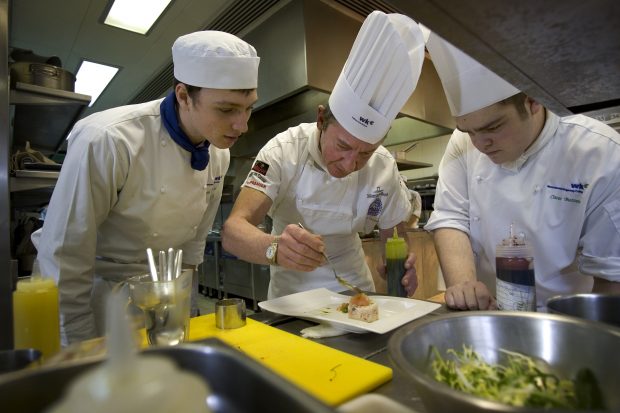How does Ofsted inspect national training providers and evaluate the standard of education and training that their apprentices receive?
These inspections are more complex than regionally based ones. After all, these are providers that might be offering a range of apprenticeships, including subjects like construction, engineering, business or hospitality, and their provision is spread across the country. The main challenge is co-ordinating inspectors in different locations where apprentices are located. These inspections usually take 4 days.
Thorough planning ensures that the team reach precise and accurate judgements. The lead inspector and other inspectors will be in constant contact. And the lead inspector will give the nominee (a senior manager at the provider’s) clear and concise feedback throughout the inspection, based on the evidence collected.
Here I describe all the elements of a recent inspection to give a sense of what’s involved.
Initial planning telephone call
I'm due to inspect a very large independent learning provider with around 3,000 apprentices across the country. The provider has been notified and I contact the organisation’s nominee to introduce myself.
The initial contact is fundamental; it helps to establish an effective working relationship. I explain the inspection process and what information I’ll require, as set out in Ofsted's inspection handbook.

I need to receive documents relating to all the locations where the apprentices learn. Then I can plan where inspectors will go. We must observe a range of apprenticeships to ensure that the judgements we reach are a fair and representative sample of the provision offered.
The first day of the inspection
On the Tuesday morning, I arrive at the provider. In the base room that we’ll use during the inspection the nominee and chief executive officer introduce themselves. A team briefing by conference call follows. This includes me, the assistant lead inspector and, on this occasion, four inspectors located across the country.
The chief executive gives us a 10 minute presentation about his organisation. This shows the improvements they’ve made since the previous inspection. I then brief all the inspectors and the nominee about their responsibilities during the inspection.
I discuss the achievement rates for the 2015/16 academic year with the nominee. These will have been published by the Education and Skills Funding Agency. The nominee explains how they track current apprentices’ progress and I scrutinise apprentices’ portfolios from the provider’s online portfolio system. This is an important part of the inspection. It helps me identify the standard of the work produced and evaluate how well the apprentices are progressing.
Work scrutiny
I’m shown work submitted by their apprentices. I check the quality and the new skills that they’ve acquired. I also look at how much progress they've made, comparing this to the skills that they had when they started their apprenticeship.

By the penultimate day of the inspection, it’s clear that the vast majority of apprentices develop new skills. For example, one young engineering apprentice can now confidently weld different grades of steel using a range of methods to high levels of accuracy. These include tungsten arc gas welding and stick and flux cored arc welding. The employer enthuses about the apprentice’s new skills and the positive contribution that is being made to the business.
Coordination of inspector feedback
At the end of every day, I contact the regionally based inspectors. I collate their judgements and record them on my evidence form. I then give the nominee clear and concise feedback at the team meeting. I complete notes on the apprenticeships we’ve observed and the portfolios we've seen. And I also record details of the apprentices and the employers we've spoken to. The nominee sees this information throughout the inspection, ensuring that she’s happy with the scope of the evidence we’re using to reach a judgement. By the end of the inspection we've reviewed all apprenticeship subjects and levels.
As we progress it’s clear that apprentices are receiving a good standard of education and training. They feel safe, enjoy their learning and are making good progress on their apprenticeships, including improving their English and mathematics skills. They’re developing positive behaviours in the workplace, which pleases their employers.
Final feedback
At the grading meeting, the inspection team (in the base room and by telephone in the regions) decide that the provision is good for all key judgements and for apprenticeships. We agree the main findings of the inspection, including strengths and areas of improvement. At the end of the meeting the nominee thanks the team for their rigour and their professionalism.
I provide feedback via video link to the chief executive and a range of trustees and senior managers. I’m confident that apprentices are receiving a good standard of education and training. Apprentices make good progress on their programmes, develop new skills and positively contribute to their employers’ businesses.
On Monday and Tuesday, I'll write the report and submit it for quality assurance checks. Then the cycle starts again as I plan my next inspection.
You can keep up-to-date with Ofsted news by signing up for email alerts. You can also follow Ofsted on Twitter.